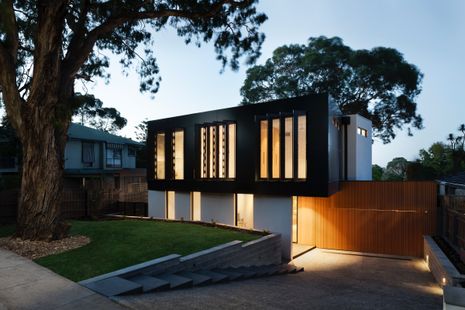|
|
|
|
|
Interest Rates Remain On Hold
Interest rates have remained steady for the second month in a row, giving owners and investors hope the end is close to the constant rate rises.
The Reserve Bank of Australia held the official rate at 4.1% this month, on the back of inflation figures last week, which showed that price increases slowed more sharply than expected in the year to June.
Inflation still remains at 6%, so it is unclear if further rate rises are on the horizon. Many economists believe there are still a lot of mortgage holders who have not been impacted by the rate rises yet as they are still on fixed-interest loans.
Rate rises by the RBA have done little to dampen property prices, which continue to rise.
CoreLogic figures show home values across the eight major capital cities rose by 0.8% in July and are now up 5% since February.
Asking rents also continue to rise, up 9% on the same time last year.
|
|
|
|
|
|
Affordable Market In Demand
As property prices continue to rise buyers are seeking out affordable markets leading to growth in that sector.
CoreLogic figures show while prices are growing the pace of growth has slowed, particularly in the upper quartile of the market.
Nationally the pace of growth slowed by 1.2% in the July quarter but the pace of growth in the upper quartile slowed by 1.8%.
The pace of growth in the lower end of the market only slowed by 1% while in the middle market it slowed by 0.7%.
CoreLogic Research Director Tim Lawless says there has been some resilience in growth across the middle and more affordable end.
“That aligns with housing finance data which has shown a stronger bounce back in the value of lending to first home buyers and investors over recent months,” he says.
“These segments tend to be more active across the middle to lower end of the pricing range where competition to purchase a home may be more intense.
|
|
|
|
|
|
Auction Results Remain Strong
National auction clearance rates remain strong at more than 70% despite an increase in listings.
CoreLogic figures show the number of properties listed for auction increased during July and by a further 17% last week.
SQM Research managing director, Louis Christopher, the increase in listings has made it a more balanced market.
“It’s neither too hot nor too cold. There is some uncertainty, but also a little bit of confidence that perhaps the RBA has reached its peak [in the rate cycle]. There are not overly aggressive prices occurring and there is not much distress selling, either,” Christopher says.
Once again Adelaide had the highest auction clearance rate last week of 82.5%, followed by Sydney, 72.4%, and Canberra, 70.6%.
Melbourne had a clearance rate of 69.9% and Brisbane, 58.3%.
CoreLogic figures show last week was the first time more than 2000 properties were offered for auction nationally since before Easter.
Melbourne had the highest number of auctions, 859, followed by Sydney, 814. |
|
|
|
|
|
Rents Keep Rising In Most Suburbs
The majority of Australian suburbs have recorded rent increases in the past financial year, with 90% of suburbs experiencing house and unit rent rises.
Two-thirds of those suburbs had increases in unit rents and a third had increases in house rents, of 10% or more.
All suburbs within Adelaide, Perth and regional Western Australia experienced rent rises in the financial year and in their house and unit markets, according to CoreLogic.
Unit markets in Brisbane, Adelaide, Perth and Darwin all had rent increases.
Three suburbs in Sydney (Long Jetty, Wyong and The Entrance), two suburbs in Melbourne (Rosebud West and Hastings) and Claremont in Hobart all had slight falls in unit rents.
CoreLogic economist Kaytlin Ezzy says record levels of overseas migrants has bolstered demand for rental properties, particularly within inner city unit markets.
She says the shortage in rental listings and lack of investors as a result of higher interest rates, are behind the rent rises.
|
|
|
|
|
|
Fixed Contracts Questioned
The home building industry is questioning whether it should continue to offer fixed-price contracts for new homes, particularly after so many companies went bust during the pandemic.
A number of builders, bound by fixed-price contracts, struggled to continue operating when high inflation resulted in the cost of building a home soaring by more than 30%.
Master Builders Australia, has begun developing what it hopes will be adopted as “industry-standard contracts” which put fewer builders at risk in the future.
It hopes they will be implemented by 2030.
Chief executive Denita Wawn, says a better approach is needed to reduce the risk involved in construction.
Wawn says it needs to be more fairly shared by everyone in the chain and not just loaded up on to the builder.
But Tamawood, executive chairman Robert Lynch says the onus should be on builders to price correctly.
He says banks will not lend money if they don’t know what the end price is going to be.
|
|
|
|
|
Quote Of The Week
“We’ve got stronger housing demand relative to the supply of new listings hitting the market. That’s led to more competitive selling conditions and really underpinned home prices. With interest rates being at their peak or very close to peak, those in the market now are continuing to feel comforted by increased certainty.”
PropTrack Senior Economist Eleanor Creagh
|
|
|
|
|
|
|
|
|
|










